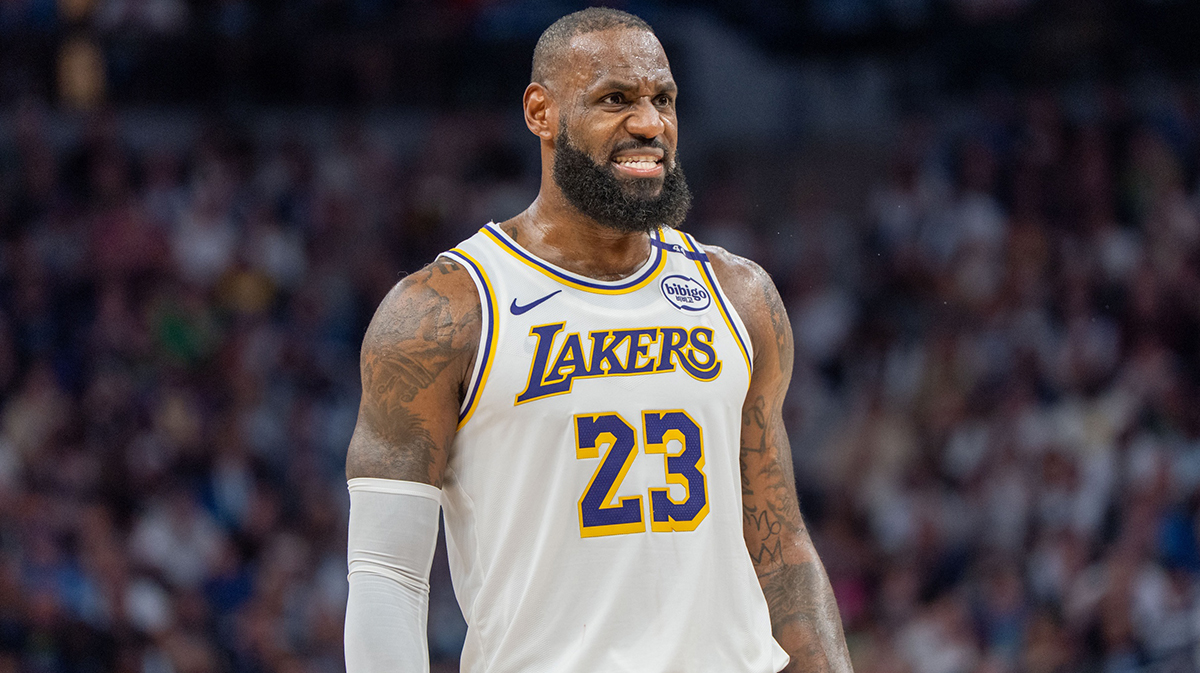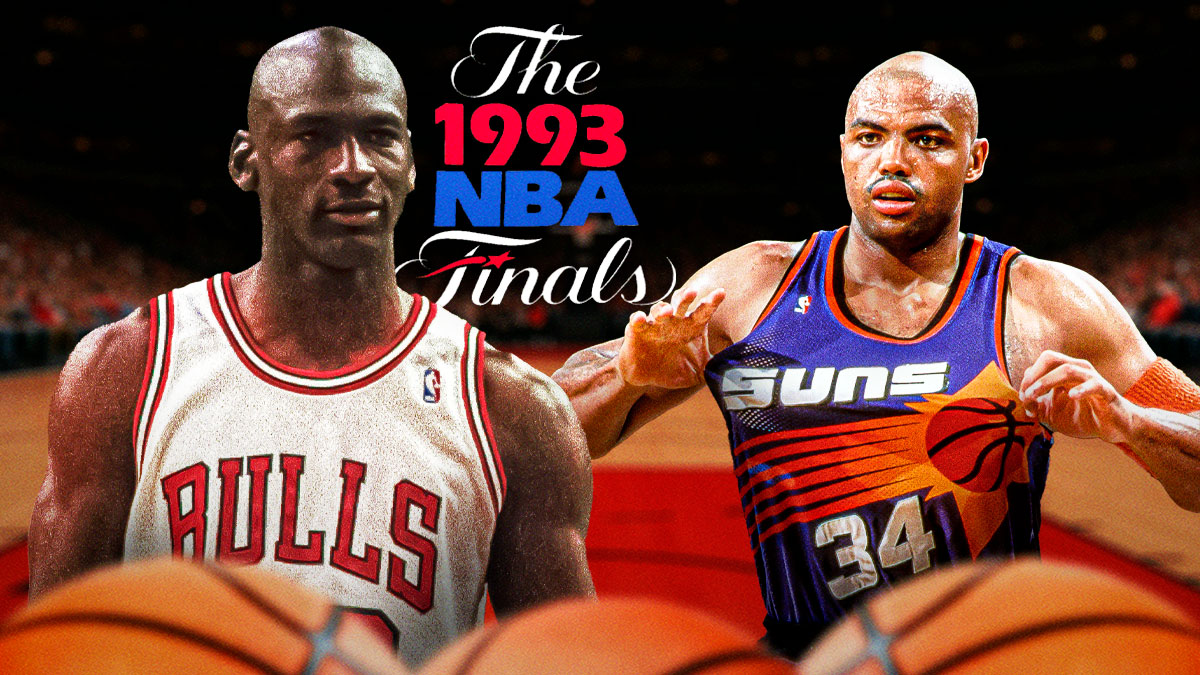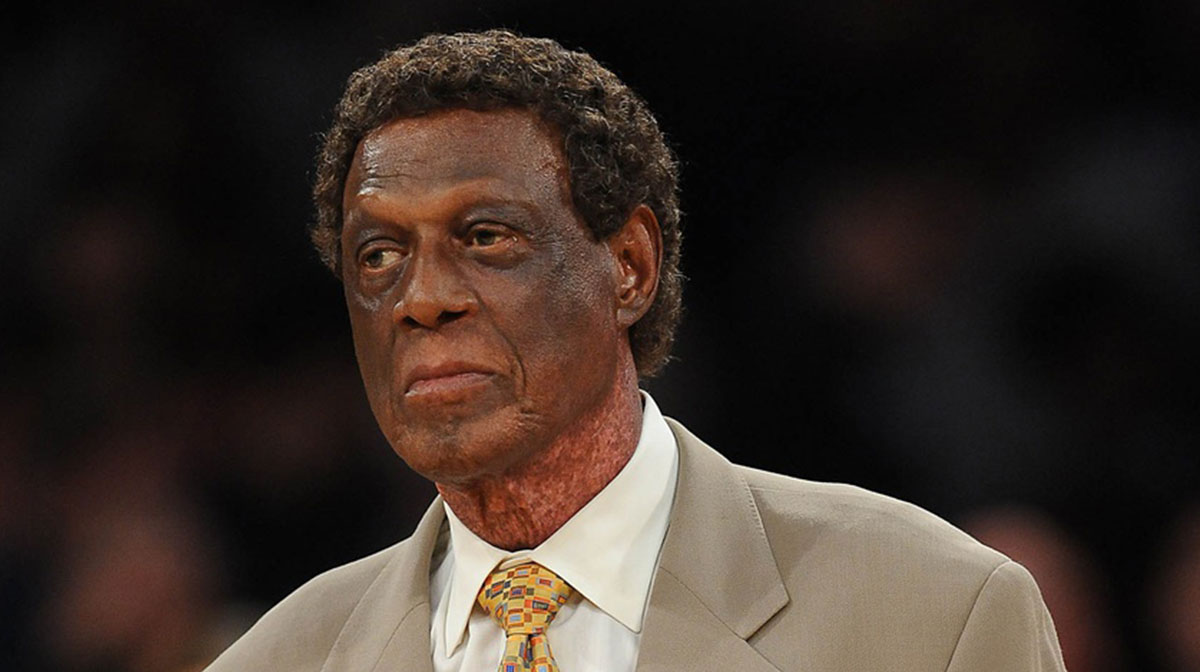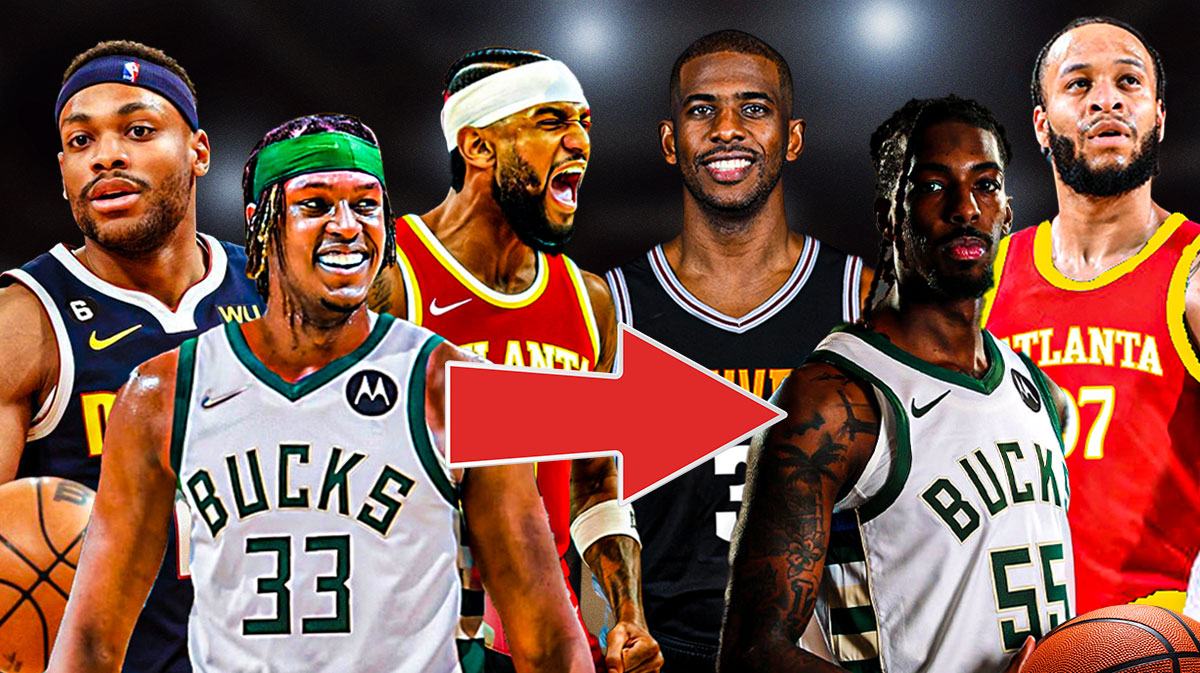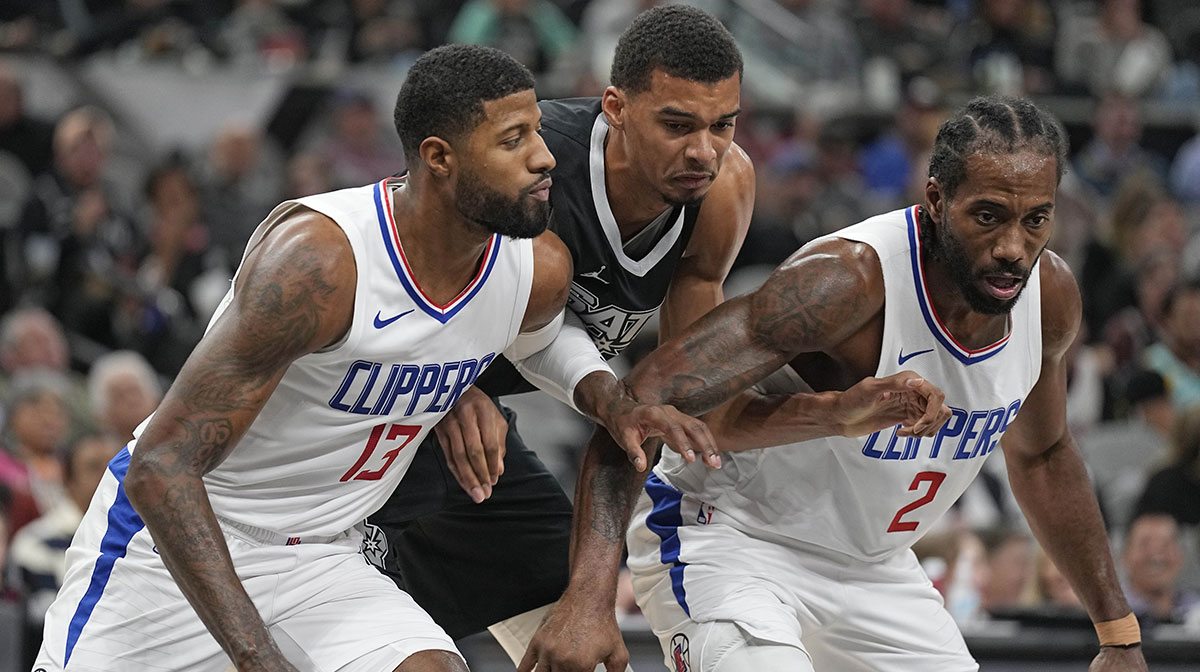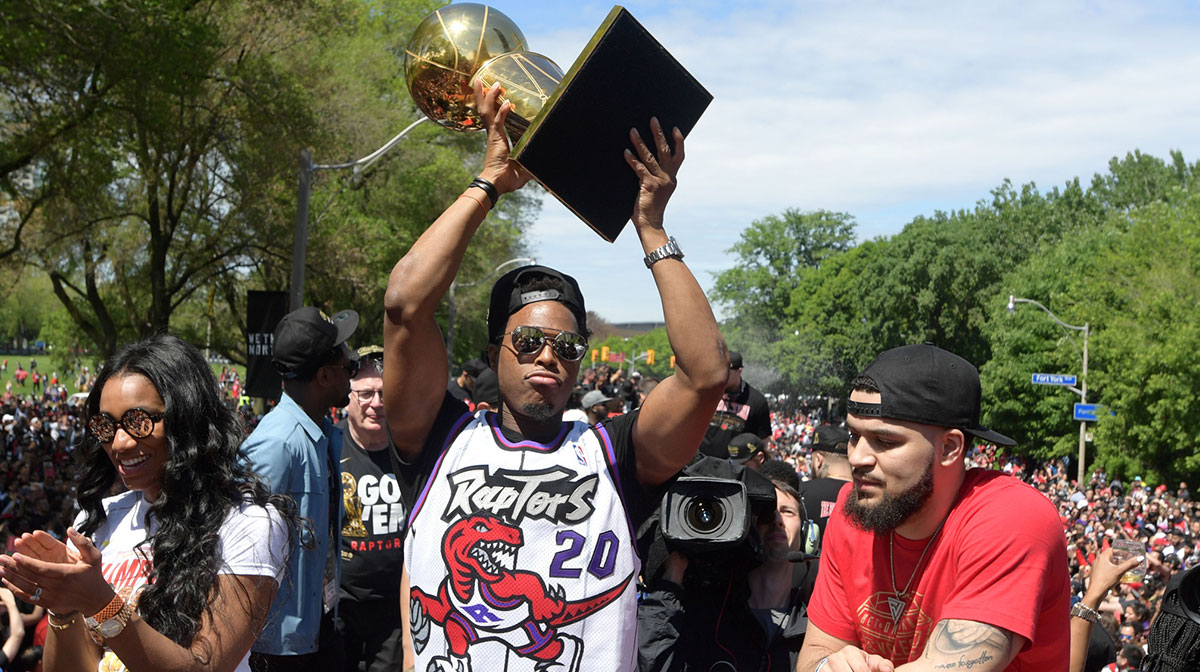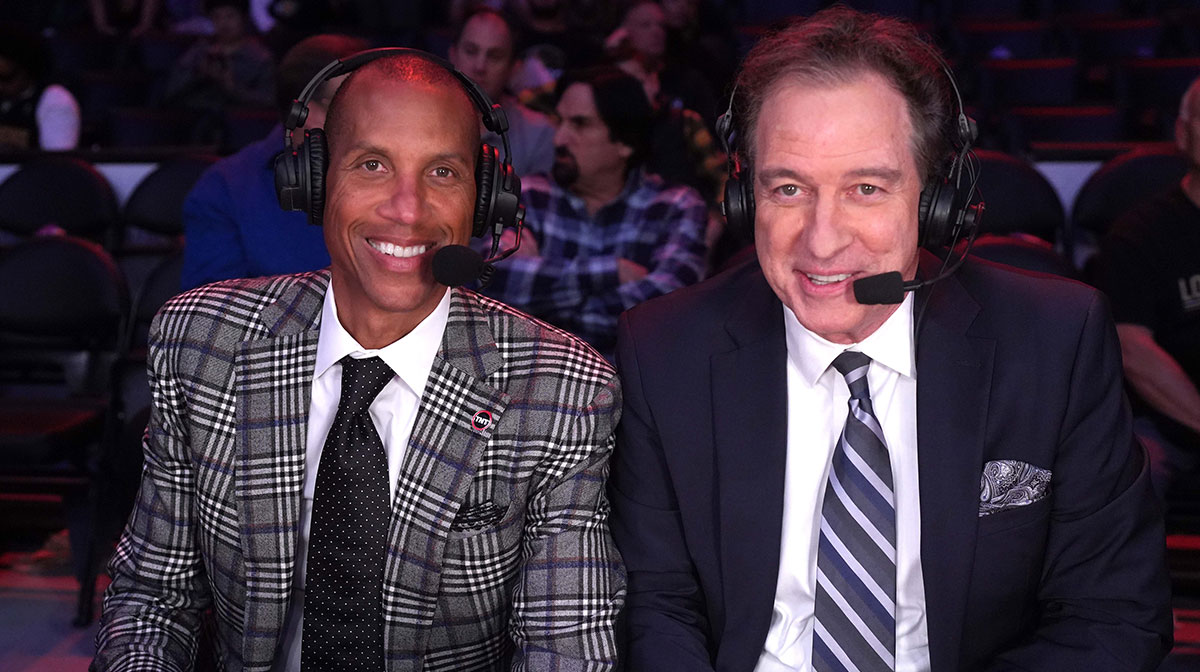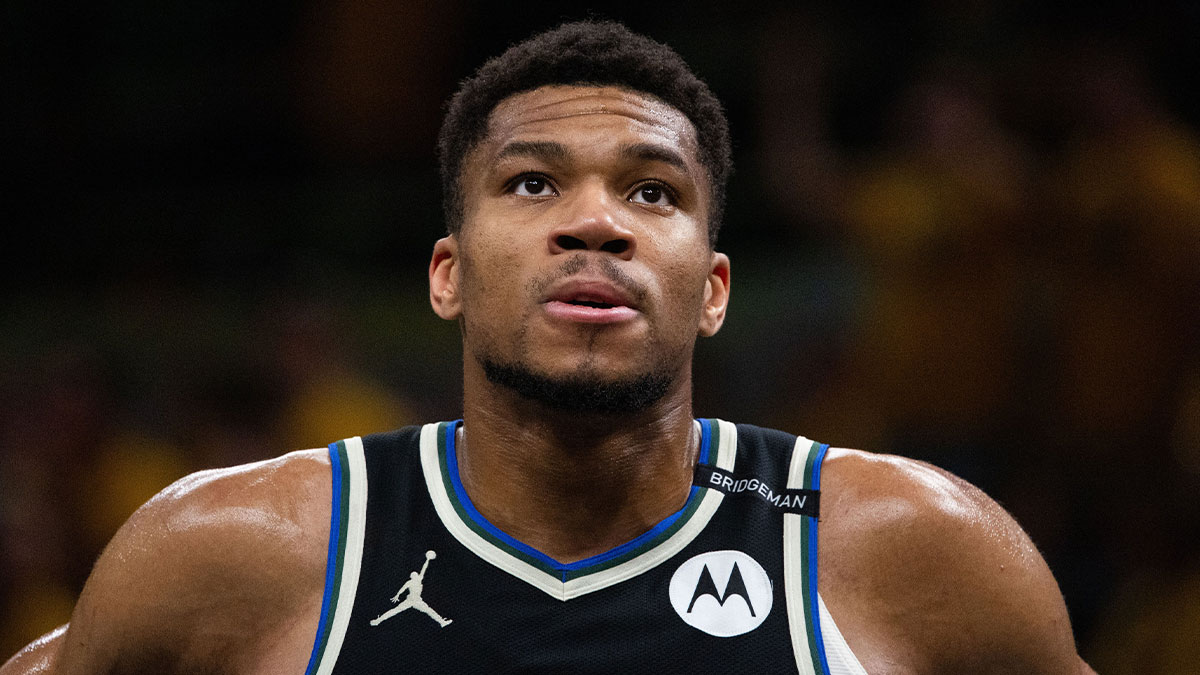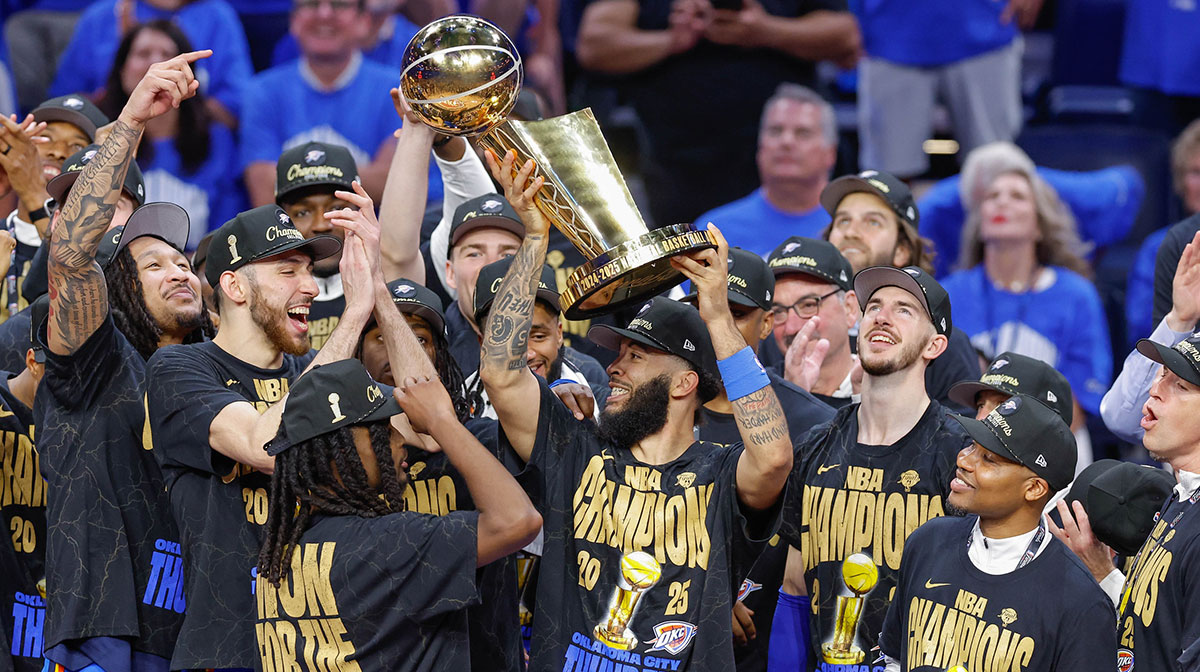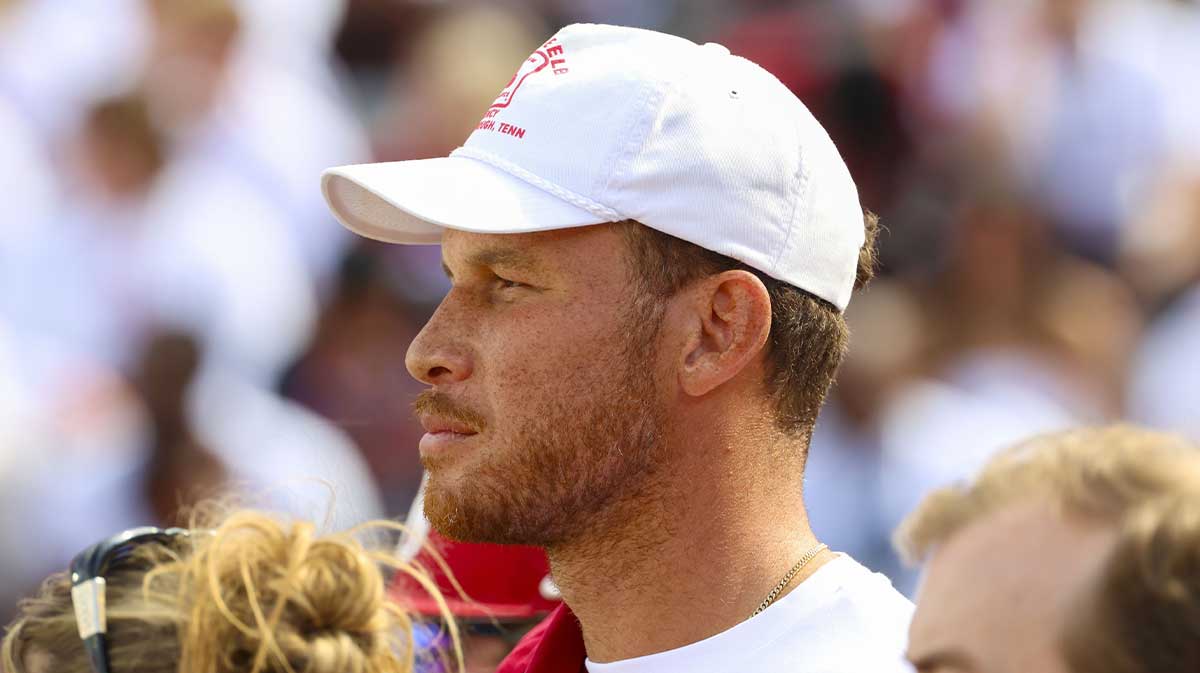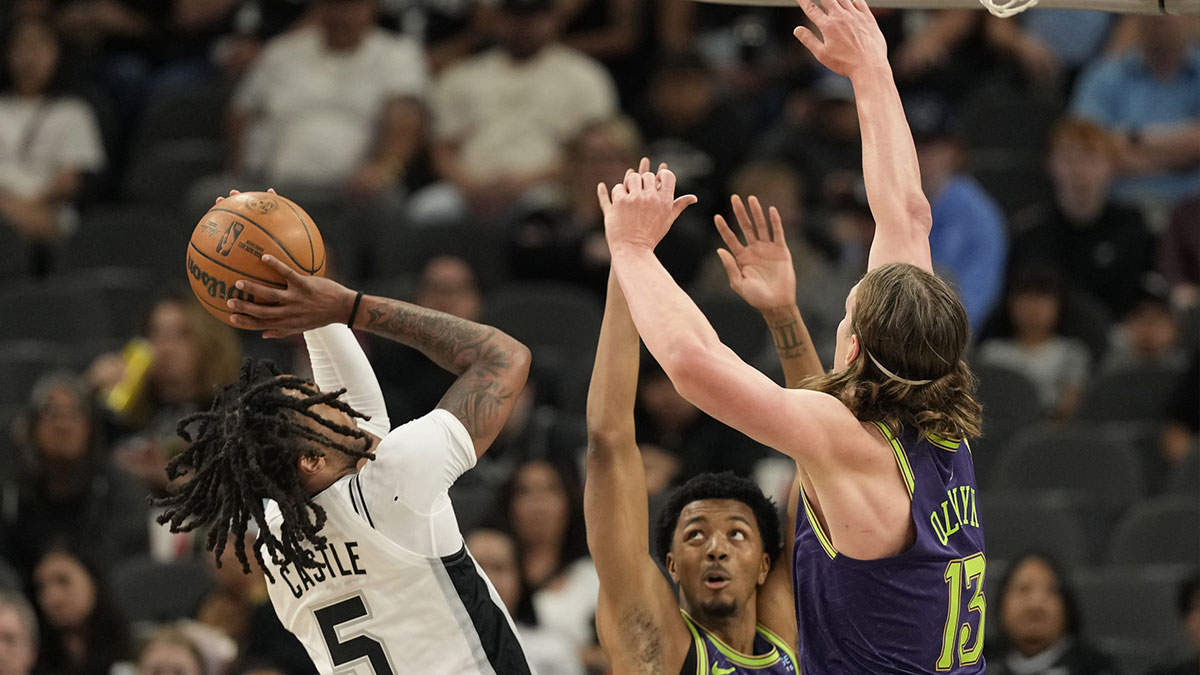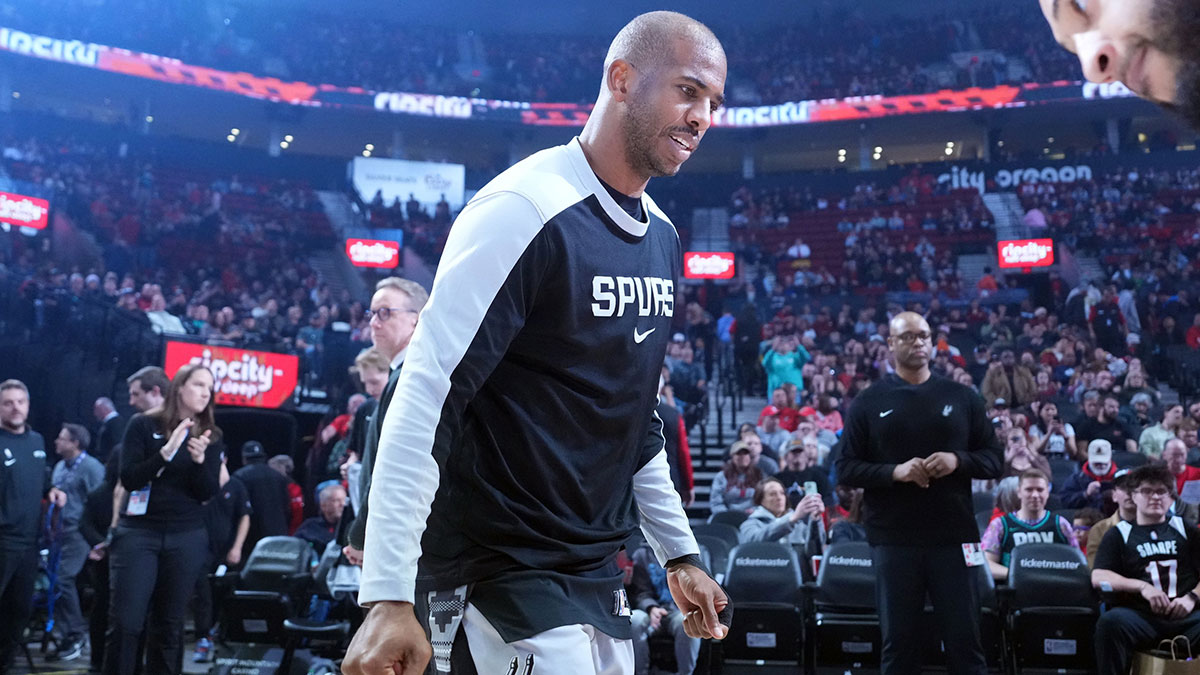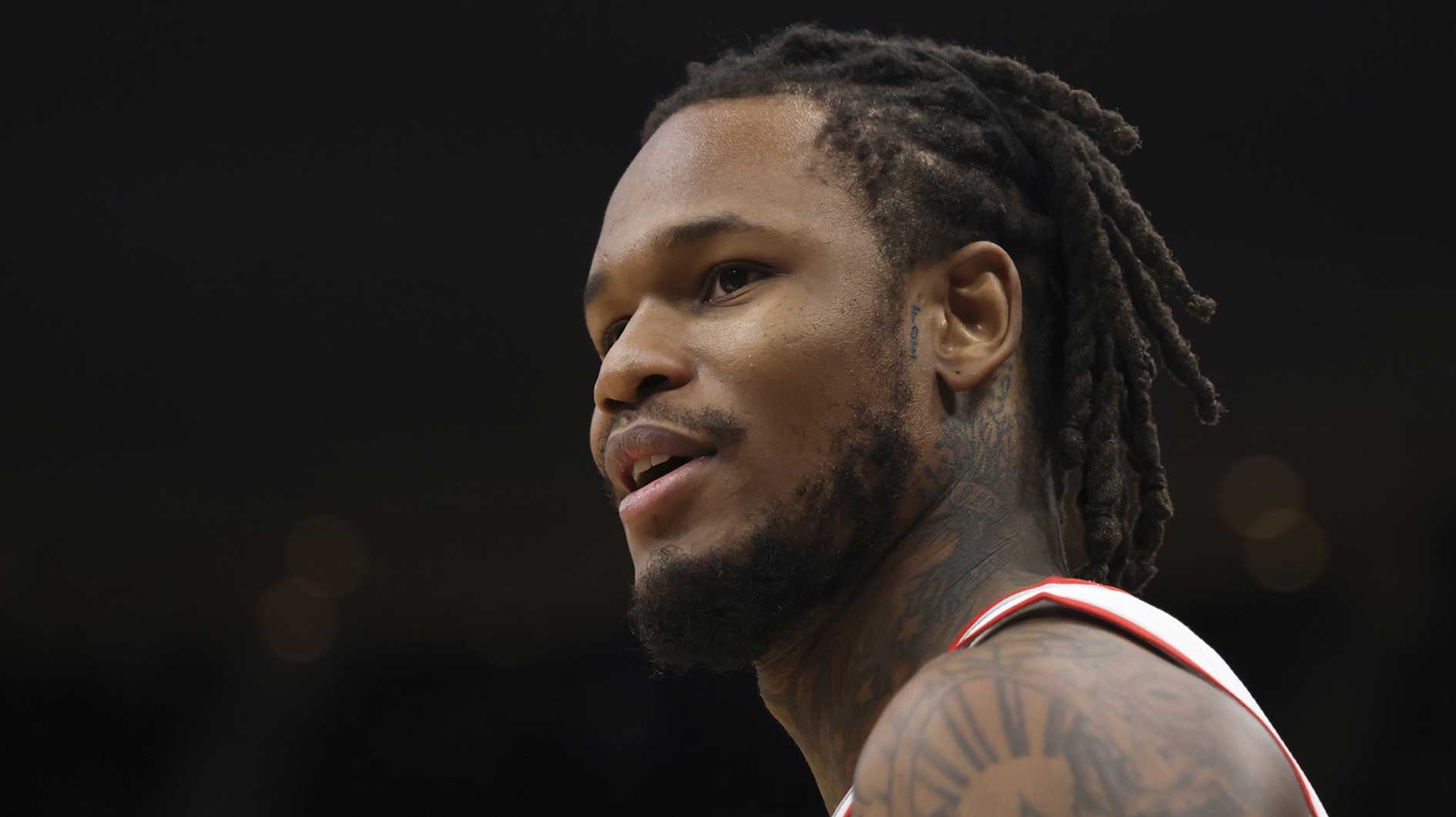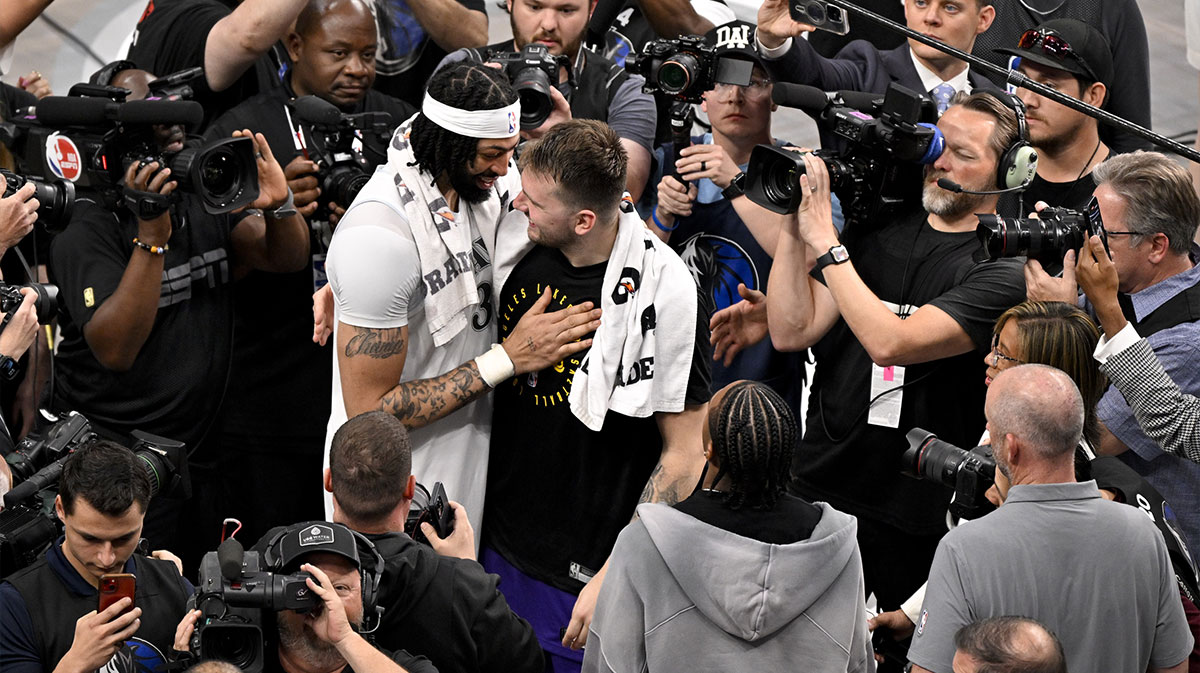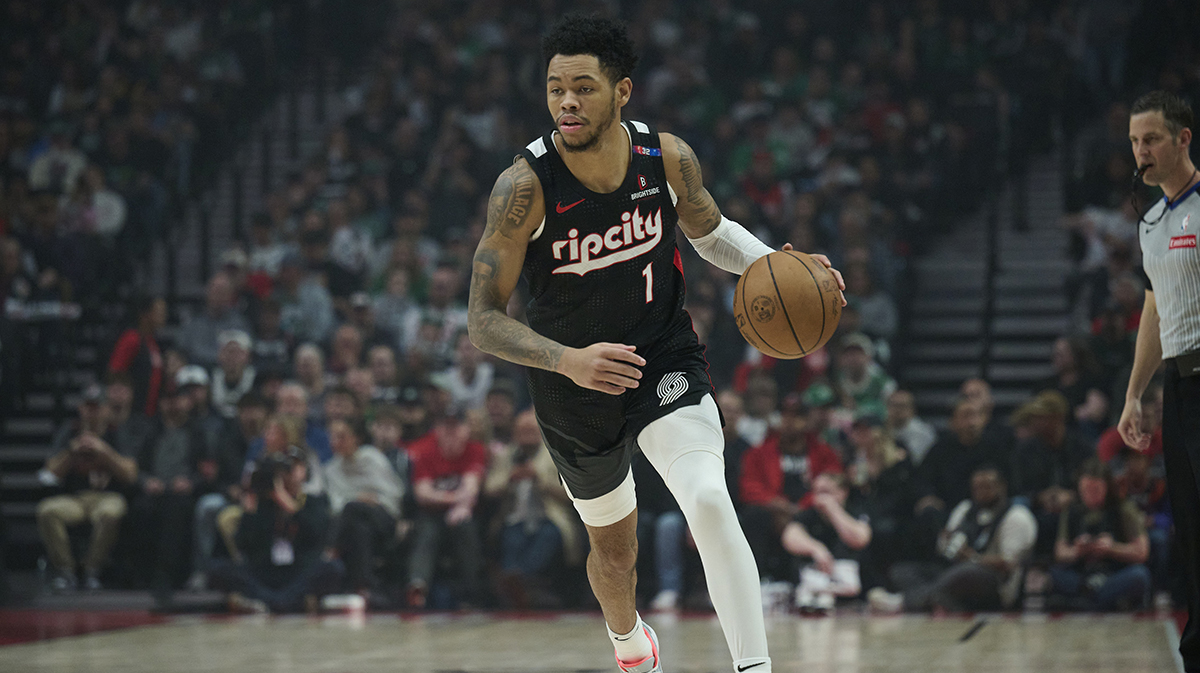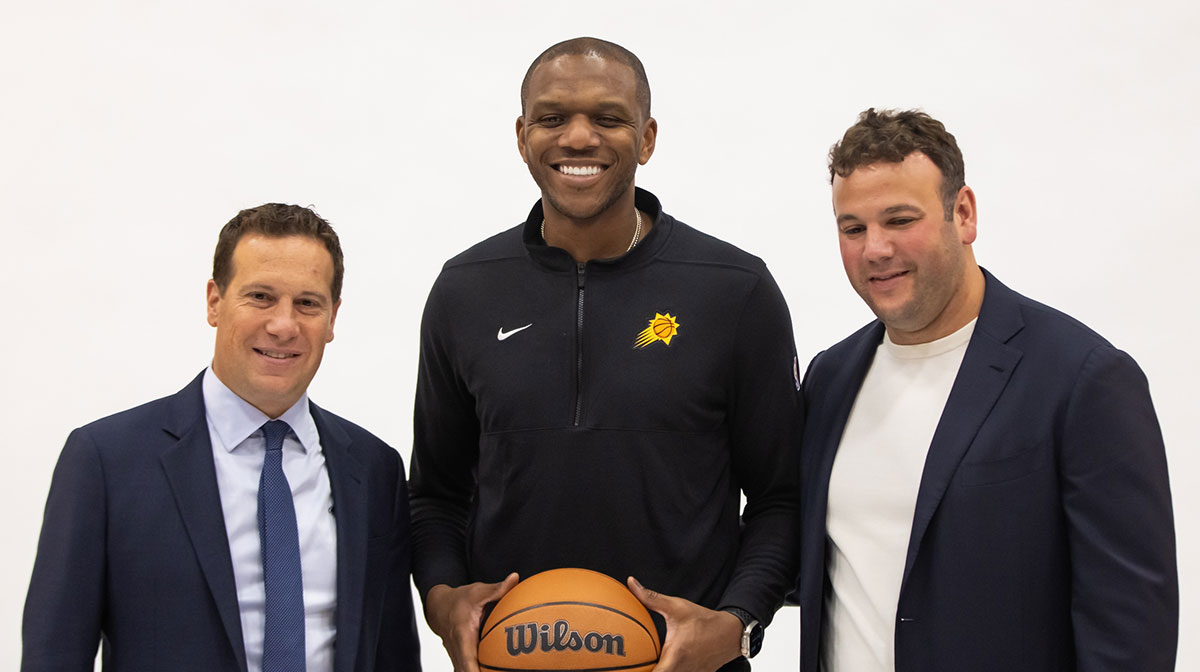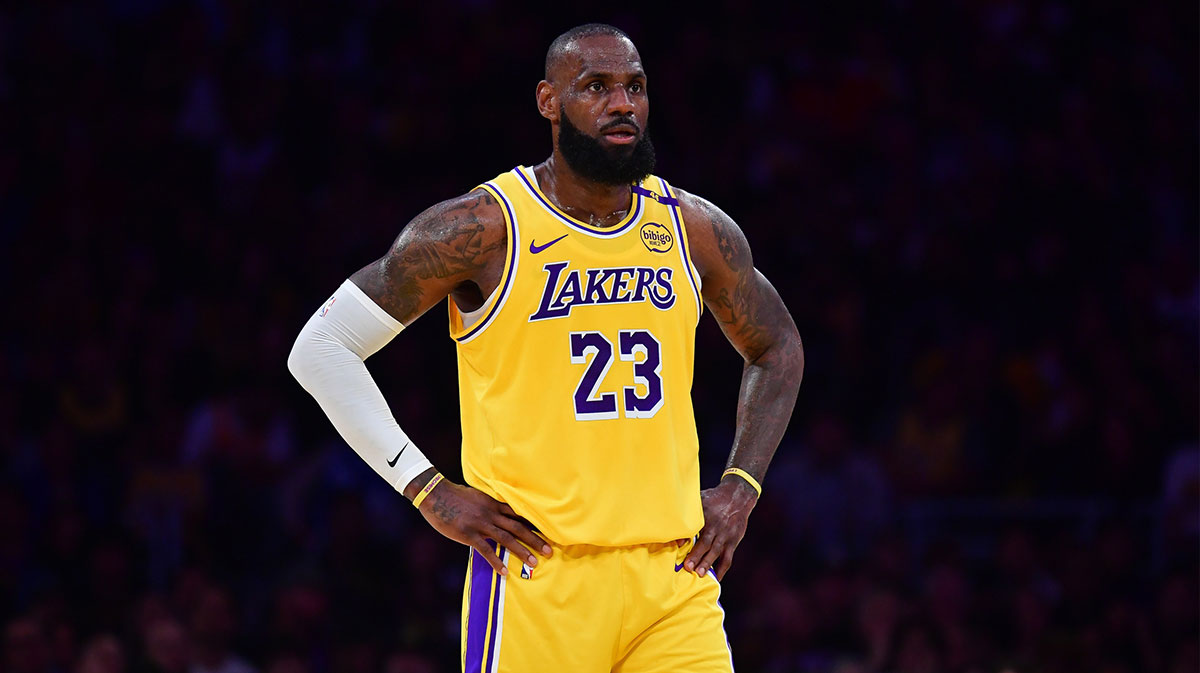Dominick Barlow already has the work ethic it takes some NBA players years to master.
“A lot of kids, you’ll have to beg them to come into the gym,” says Overtime Elite player development coach Pat Quinn. “I have to get Dom out of the gym.”
A former mid-major recruit who ranked far outside the top-100 prospects in his high school class this time last year, the Overtime Elite forward was a steady riser throughout the pre-draft process, opening eyes of NBA scouts and decision-makers at the NBA combine and in team workouts. Barlow never heard his name called on June 23rd, a minor shock to draft experts who believed his upside was at least worthy a second-round flier. After quickly signing a two-way contract with the San Antonio Spurs upon going undrafted, though, he's ready to get back to doing what he does best.
“I love competing,” Dominick Barlow tells ClutchPoints. “I want to compete against whoever it is, whether it’s a guy who’s not on the big board or a guy who’s in the lottery on the big board. I just want to compete against anybody, and just show how competitive I am.”
But just because Barlow is stoically charging into his the next phase of his career amid that draft disappointment hardly means the physical and mental grind needed to overcome obstacles always came easy—let alone on the type of court normally reserved for future NBA players.
Back in late 2020, before running away with North Jersey’s High School Player of the Year honors, Barlow prepared for his delayed senior season at Dumont High School by training in frigid winter temperatures at a local park. He shoveled snow off the blacktop on many mornings, clearing just enough space to tighten his handle, hone his jumper and forge the confidence needed to emerge as one of this draft’s preeminent sleepers.
“Man, it was brutal. Playing basketball outside in the winter—it was very, very cold,” Barlow says. “I usually had a couple friends with me, so it wasn’t like I was by myself. That would’ve made it a lot more difficult. But I mean, it was still tough. One pass comes and you jam your finger, you really don’t feel that. It was very tough.
“But I think mentally,” he says, “that really locks you in and makes playing a normal game super easy.”
Barlow certainly made prep competition look that way during his pandemic-shortened swan song at Dumont. He averaged 27.6 points, 17.0 rebounds, 3.1 assists and 2.6 blocks per game as a senior, carrying the Huskies to a 7-1 record.
But the nationwide attention such rapid, tangible development of his game deserved didn’t come for a few more months. When an uncommitted Barlow embarked on last summer’s AAU circuit with the New York Rens, area programs like Providence, Pittsburgh and Rutgers were the most prominent programs to have offered him a scholarship. Not for long.
By the time Peach Jam was finished in late July, the basketball world had finally recognized what the notably centered, self-reflective Barlow did during his dominant senior season with Dumont.
“I was just as good as everybody else, but people didn’t really see me because of COVID,” he says. “I put a lot of work in during the winter time getting ready, because I knew how big Peach Jam was. I just think mentally I was checked in a lot more than some other people. I was taking games super seriously. I knew that college coaches were watching, and I knew that this was my opportunity to show what I could do and put myself on a national rank. That’s what I did.”
https://www.youtube.com/watch?v=i8HEb9zzWIo
Barlow was selected to the All-Breakout Team in Augusta, guiding the Rens to the Peach Jam semifinals. Veteran high school hoops reporter Adam Zagoria gave him Second Team honors, right alongside seventh overall draft pick Shaedon Sharpe.
Suddenly one of the hottest recruiting targets in the country, Barlow picked up tens of new scholarship offers as summer wound down, including from NCAA powers Kansas, Florida and Ohio State. But playing college basketball, even at the highest level, was never Barlow’s goal.
Iron sharpens iron, and his taste of success battling with blue-chip prospects like Jalen Duren and Dereck Lively in the knockout stage at Peach Jam only made Barlow hungrier to prove himself.
“Once I really saw that I was competing against anybody in the country, that I wasn’t getting the same national attention as these other guys, that would be really frustrating for me,” he says. “I didn’t know what I was doing wrong or if I just wasn’t in the right situation. There would be a lot of days where I would just be thinking about what’s next for basketball. So I knew that if I just continued to work, eventually that opportunity would come, and I just wanted to be ready for it.”
Still barely breaking into recruiting rankings in wake of that stellar summer, Barlow initially planned to take a post-grad year at Bridgton Academy before finalizing his college choice. He and his mother, Theresa, made the six-hour drive to Southwestern Maine in late August, even moving Barlow into his dorm on campus.
Bridgton’s rich basketball history, including several NBA alumni, made it seem like the perfect stepping stone toward his increasingly bright future.
“I loved Bridgton. I loved the staff, I loved the facility and I really was excited to start my fifth year,” Dominick Barlow says. “I thought going into that fifth year I was gonna be able to become a top-10 player in the country and achieve everything I wanted at the high school level.”
Barlow didn’t spend a full week in Maine before becoming the 21st player to sign with Overtime Elite.
Leaving Bridgton was an “extremely tough” decision for Barlow. His mom was especially skeptical of OTE at first, understandably wary of a fledgling professional basketball outfit that hadn’t even established its competition when Barlow committed.
Theresa trusted her son’s judgement, though, even more so after learning of his newly accelerated timeline toward the NBA—one too enticing for a wide-eyed Barlow to pass up.
“OTE was very interesting and had a lot of appeal just because they told me things that nobody’s ever told me before,” he says. “They told me we can get you to become an NBA player in a year if you put the work in, and you’re willing to have that blind trust in us. I had blind trust. Looking at it now, it’s a little crazy that I had that much blind trust, but I’m happy I did.”
Just because he believed in everything the program was selling doesn’t mean leaving Bridgton for OTE was an easy immediate transition for Barlow.
The 19-year-old admits he was “extremely nervous” en route to OTE’s campus in midtown Atlanta, and that it was a “little scary” putting his future in the hands of a pro basketball startup set to rock the flimsy foundation of amateurism. Barlow didn’t have strong preexisting relationships with his teammates and coaches, either, a result of his relatively scant experience playing on the elite summer scene.
“When I first met him he was very quiet. Very to himself a little bit,” says Ryan Gomes, Barlow’s coach with Team Overtime. “But it was also clear he was very intrigued with just playing basketball, and learning the game and learning himself.”
Barlow’s passion for basketball accelerated his acclimation to OTE. The gym was his refuge, nerves leaving him every time he picked up a ball and stepped on the hardwood.
One problem: OTE’s eponymous arena wasn’t finished when Barlow arrived in Atlanta last September, forcing the program to book crowded auxiliary gyms for preseason workouts. Some players relished that opportunity to ease into training, but not Barlow.
He was already striving for every possible opportunity to get better, a trend that continued throughout OTE’s regular season.
“He was just hounding me, ‘When can I get in the gym? When can I get up extra shots?’” Quinn recalls. “For like the first six weeks, this was every day. And then once we moved into our facility, it was literally every day. Every day.
“If we had a game, he was working out with me before the game. If it was a practice day, we were coming back at 8:00 every night. He was the one guy that I just said, ‘Dom, I’ll be here every night at 8:00,’ and I would never have to check on him. I would never have to say, ‘Hey Dom, you coming today?’ He was going to be there every night at 7:50, ready to work. It was really a pleasure doing that with him for the last six months.”
Barlow’s approach to individual workouts, both back in Atlanta and now as he jets coast-to-coast in prep for the draft, extends to the full team setting.
Gomes, a second-round draft pick in 2005 who became a regular starter for the Minnesota Timberwolves and LA Clippers, has full trust in the late-blooming Barlow reaching his potential. In an era that demands a more player-friendly, hands-off tack from NBA coaches, Barlow would be just as comfortable embarking on his career three decades earlier.
“As far as learning and teaching, he’s all eyes and all ears on trying to become the best player he can become,” Gomes says.
The lavish praise Barlow’s work ethic has engendered from coaches and trainers at OTE is nothing new.
Dumont High School coach Ken Martoral says “no one works harder.” Grassroots prep program Jersey Force has tweeted about Barlow being “one of the greatest kids you’ll ever meet.” AAU coach and trainer Kenneth Miller, who like Martoral played a pivotal role in Barlow’s early growth, knows he’ll “do whatever it takes to win.”
But the mindset that makes him an ostensibly ideal basketball pupil isn’t as innate as he makes it seem.
Barlow didn’t pick up the game until third grade, only after his mom “forced” him to play. He then spent hour after hour of his adolescence at the local park, finally finding a real devotion to basketball just a couple years ago that helped him realize just how far the sport could take him—as long as he put in the work, of course.
“I was really able to just find my love for the game through playing at the park, Barlow says. “Then I’d get in the gym, in a setting where I was more trying to get better, and it was just really easy because I wanted to get better. I understand how crucial that is, player development, how crucial it is to your success at the next level.
“It wasn’t really hard for me once I found the love for the game.”
Barlow boasts natural gifts that should’ve made him more than a blip on the scouting radar long before Peach Jam.
He measured just below 6-foot-10 in shoes at the combine last month, with an eye-popping 7-foot-3 wingspan—the same as Giannis Antetokounmpo’s. Barlow’s 11-foot, 10-and-a-half inch maximum vertical standing reach ranked best among power forwards in Chicago and fourth-highest overall. At 221 pounds with miniscule 5.9% body fat, he’s clearly a long way from his physical prime.
Barlow didn’t fare quite as well in athletic drills at the combine, testing as a more dexterous, coordinated athlete than freaky explosive one. But considering his prototypical measurements and the role he played with Team Overtime, Barlow still represents a rough blueprint of the ultra-versatile NBA defender whose value rises with the quality of competition.
“Just because of his motor, he’s never gonna take a play off where you can get an easy bucket. He’s got length, and he’s quick enough to stay in front,” Quinn says. “I’m not sure that teams really understand that he’s what every team is looking for: A 6’9’’, 6’10’’ guy who can switch pretty much one-through-five.”
Team Overtime’s defensive rating with Barlow on the floor this season was 82.2, lowest in the program. He was one of just three OTE players to register steal and block rates of 2.0% or better. The others? Ausar and Amen Thompson, identical twins from Fort Lauderdale who project as likely top-10 picks in next year’s draft.
Cutting his teeth guarding the 6-foot-8, hyper-athletic, multi-skilled Thompsons in the confines of Overtime Elite served as a crash course for what could be Barlow’s NBA destiny. There are only so many defenders in basketball with the size, quickness and instincts needed to make life hard on the league’s apex predator wings.
“I think on the defensive end, at his size, every game that he played he was guarding the other team’s best players. When we had the inter-league games, he was guarding the Thompson twins,” Quinn says. “They don’t necessarily play his position, but because of his length and how well he moves his feet, he was the best matchup. Even talking to Amen and Ausar, it’s like, ‘Dom was the hardest guy for me to go up against.’”
Gomes calls Barlow “pro-ready” as a defender right now, adamant that “remarkable” attention to detail will make his acclimation to NBA defense far more seamless than that of most first-year players. Barlow kept a close eye on New Orleans Pelicans wing Herb Jones this season, seeing broad outlines of himself in a previously little-known rookie who just missed out on Second Team All-Defense honors.
Even if he really has the defensive chops to garner early playing time, the immediate and ultimate trajectory of Barlow’s NBA career is bound to be decided on the other side of the ball.
He averaged 14.8 points per game this season, second on Team Overtime behind Jean Montero, who signed with the New York Knicks after going undrafted. Barlow’s efficiency numbers stand out much more. His 63.3 true shooting percentage led all OTE regulars, accomplished in part by gaudy 58.5% shooting on twos and a proclivity for getting to the free throw line, where he shot a solid 76.4%.
Those stats suggest little about Barlow’s comfort from beyond the arc, and neither does his 19-of-56 shooting on threes across 25 games. Falling just short of 34.0% from three would mark a scouting red flag for some prospects, but is actually a ringing endorsement of the rapid progress Barlow has made as a jump-shooter.
“The number one thing that we worked on and is the biggest area of growth is his shooting,” Quinn says. “His range was basically to the high school three-point line at first. For a big man, that was pretty good, to be a 6’9’’ high school player that could shoot high school threes. But that adjustment to the NBA line really took him time, and we needed to make a couple of adjustments with his balance, with his left hand.”
Barlow misfired on his first 11 three-point attempts during OTE’s regular season. It wasn’t until Team Overtime’s eighth game that he connected from long range, his tireless work in the practice gym finally shining through when the lights were bright.
Barlow shot 16-of-36 from deep during Team Overtime’s last 13 games, including two outings with at least four made triples.
“I came into OTE and I really didn’t have a jumpshot,” Dominick Barlow says. “I left shooting like 35% from NBA three. I would say that’s a pretty big jump.”
Barlow, ever self-aware, knows exactly how scouts and front office decision-makers envision his game translating to the modern NBA.
There are certainly better scorers and shooters than Barlow in this draft class. There are more battle-tested defenders and finishers, too. But when half the league’s season ends and the games really start to matter, Barlow believes his burgeoning two-way versatility and affinity for dirty work will make him an on-court fixture for years to come.
“You see how long and athletic the playoffs really get,” he says. “Everybody has to be able to space the floor, everybody has to be able to defend and everybody has to be able to provide energy, toughness, all those other things that may not show up on the stat sheet but will help you win games. I think I provide that.”
Gomes agrees.
“Dom will be quick to be that 3-and-D guy,” he says, “because he likes to guard, he likes to defend and he can also rim protect.”
Don’t mistake Barlow’s grasp of his likeliest NBA archetype with his lacking ambition for a bigger one.
Asked which NBA players he models his game after, Barlow mentions Pascal Siakam, Jerami Grant and Tobias Harris. Gomes compares him to Kyle Kuzma. Quinn sees shades of Mikal Bridges. Barlow could keep growing into his body and evolve into a mobile stretch five, like Maxi Kleber.
Those careers would count as an unmitigated success for pretty much any player on the cusp of being drafted, let alone one who NBA teams knew nothing about last spring. Still, Barlow wants more.
Should he vault above even the most optimistic appraisals of his ceiling, though, it’s obvious Barlow will maintain the gritty approach that helped get him to basketball’s highest level in the first place.
“Being 18 years old, I have a ton of room to expand my game,” he says. “I think I could eventually become a player who has the ball in his hand and also still does the small things.”
A hesitant, almost sheepish Barlow continues, admitting his dream of channeling Antetokounmpo in the NBA.
“This is gonna be a hard example, just because he’s one of a kind, but like a Giannis almost,” he says. “He still does the little things that most superstars wouldn’t even think about doing. He does that on a nightly basis. We just saw him yesterday, 30 feet behind the play trying to chase down Jayson Tatum. He gets dunked on, then just gets up like nothing happened. Those are winning plays that if he gets one out of 10 times, he helps his team.”
The odds are definitely against Barlow winning multiple MVPs, dragging a small-market franchise to its first championship in half a century and staking a forceful claim as the best player in the world. Like he says, Giannis is one of one.
But the attitude that separates Barlow from his peers isn’t dissimilar from that which has molded Antetokounmpo into one of basketball’s greatest all-time success stories.
Genuine humility, measured confidence and a burning desire to be his best already has Barlow at the end of a journey to the NBA no one imagined less than a year ago. Who wants to bet against his next path leading to stardom?
“You’re not gonna get a quote from me limiting what Dom could become,” Quinn says. “If he averaged 20 points a game for four or five years in the NBA, that would not surprise me.”
Just the start of what makes Barlow such an intriguing prospect and surefire fan favorite at the next level—not to mention a perfect fit for the development-focused Spurs—is that his perspective won’t change either way.
Finding his NBA niche as an irreplaceable starter, game-changing third big or random playoff spark plug, Dominick Barlow will be waiting and ready to make his unique presence felt.
“I know that I’ve worked for it every step of the way,” he says. “Nothing got handed to me, and that’s what makes the journey that much better—knowing that I earned the right to be on it. Nobody can take that away from me.”

